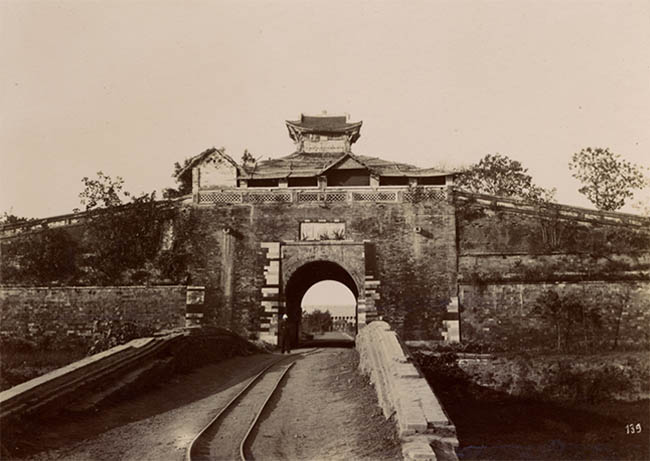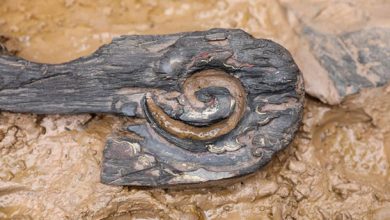Exhibition ‘The Citadel of Hà Nội – Glimpses of an epoch
To celebrate the 15th anniversary of the Cultural Heritage Day of Vietnam (23/11/2004-23/11/2019), the Thăng Long – Hà Nội Heritage Conservation Centre works with the National Archive Centre 1 affiliated with the Ministry of Home Affairs to organize an exhibition titled ‘The Citadel of Hà Nội – Glimpses of an epoch”. This event is part of the cooperation programme between the two organizations.

The Southeast Gate of Hà Nội Citadel, circa 1888 – 1891(Courtesy: EFEO).
The exhibition exploits for the first time the abundance and diversity of the Imperial Archives of the Nguyễn Dynasty combined with the French-language documents, including images, maps, sketches of the Thăng Long-Hà Nội Citadel in order to reflect and portray a vivid and true-to-life picture of the process of construction and alteration to the spatial structure of the Thăng Long – Hà Nội Citadel under the Nguyễn Dynasty and the influence of the French (1802 – 1945). It also reconfirms the values of the Central Sector of the Imperial Citadel of Thăng Long in terms of architectural art, construction techniques and urban planning.
Under the Nguyễn Dynasty, even though Thăng Long – Hà Nội Citael no longer served as the nerve-centre of the entire country, it still played an important political role. In 1802, Emperor Gia Long named Thăng Long Citadel as the capital of the north, overseeing 11 administrative units. The king also retained the name Thăng Long with Long now meaning ‘prosperity’ instead of ‘dragon’.
In 1804, Kính Thiên Palace, the typical and famed structure of the Lê dynasty, became the dwelling palace or xinggong, of the Nguyễn kings whenever they were on an inspection mission to the North. In many years that followed, the palace underwent continuous repair. In 1841, King Thiệu Trị ordered the construction of several other edifices including a five-bay main palace and a rear hall, Thị Triều Hall, Cần Chánh Hall and Chu Tước Gate. A system of walls was put up for protection of the xinggong. Towards the 1870s, the xinggong was reflected in fairly great details in writings, photos and old maps drawn by the French and it was considered “one of the masterpieces of An Nam’s architecture”
Năm 1831 vua Minh Mệnh đã tiến hành cải cách hành chính, chia đặt các tỉnh trong cả nước, trong đó có tỉnh Hà Nội. Thành Thăng Long trở thành trị sở của tỉnh Hà Nội.
In 1831 Emperor Minh Mệnh initiated administrative reforms which established provinces nationwide, including the Province of Hanoi. Thăng Long Citadel became the seat of power of the province of Hanoi.
Thăng Long – Hà Nội Citadel was built by the Nguyễn Dynasty in the Vauban style, on the foundation of the former citadel of the Lê Dynasty. This style of citadel originates from France and was adopted in Vietnam towards the end of the 18th century. The citadel was square-shaped, measuring about five kilometers in perimeter. The citadel walls are more than 4 meters high and 16 meters thick, with the lower parts and upper parts built of blue stones and cuboid bricks respectively. The citadel featured five gates facing the north, east, west, southeast and southwest.

The royal decision in 1841 to appoint the titles of Provincial Governor and Provincial Military Commander in preparation for major diplomatic events and reception of the king on his inspection to the citadel in the subsequent year. (Source: National Archives Centre 1/ Nguyễn Dynasty Imperial Archives).
Into the second half of the 19th century, given the complicated regional and global contexts, the Nguyễn Ruling House had to confront the imminent invasion by the French. After conquering Cochinchina, between 1873 – 1882, French colonizers twice attacked the Citadel of Hanoi in order to conquer Hanoi as well as Tonkin at large, taking control of the Red River which is conducive to trade with China. The Harmand Treaty (1883) signed between the Nguyễn Dynasty and France was the result of such a wicked plot.
The Citadel of Hanoi during this period of 1883 – 1897 was subject to severe intervention from the French army. In the early years of its conquest of the citadel, the French army made use of the old edifices and built new military camps and barracks inside the citadel, turning the whole complex into its command post. However, on 28 July 1893, the Hanoi Town Hall, established in 1888, proposed the demolition of the citadel walls and half of the western corner of the citadel in order to build a new Western-styled street area. The plan to demote and demolish the Hanoi Citadel was completed in 1897.
From 1897 to 1945 and prior to the French army’s withdrawal from Hanoi in 1954, the Citadel of Hanoi served as the grand headquarters of the French army in Indochina.
The Citadel of Hanoi today is the remaining part of the central axis of the Vauban citadel in the past, including the Flag Tower (Kỳ Đài), South Gate (Đoan Môn), Kính Thiên Palace Foundation, Ladies’ Pavilion (Hậu Lâu) and North Gate. Together with the archaeological vestiges that have been discovered in the 18 Hoàng Diệu Site, it was inscribed on UNESCO List of World Cultural Heritage in 2010.
Exhibition ‘The Citadel of Hà Nội – Glimpses of an epoch’ has two themes:
- Part 1: The Nguyễn Dynasty and Hanoi Citadel
- Part 2: The French and Hanoi Citadel
The exhibition brings viewers a lot of useful information and helps them understand more about the values of different types of world heritage of Vietnam.
The exhibition opens to the sightseeing public from 22 November 2019 at the Imperial Citadel of Thăng Long, 19 Hoàng Diệu Street, Ba Đình District, Hanoi.
Thăng Long – Hà Nội Heritage Conservation Centre





